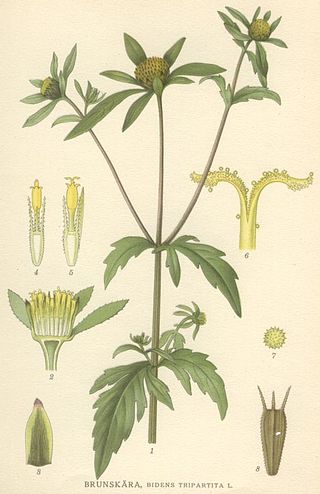
Bidens is a genus of flowering plants in the aster family, Asteraceae. The genus include roughly 230 species which are distributed worldwide. Despite their global distribution, the systematics and taxonomy of the genus has been described as complicated and unorganized. The common names beggarticks, black jack, burr marigolds, cobbler's pegs, Spanish needles, stickseeds, tickseeds and tickseed sunflowers refer to the fruits of the plants, most of which are bristly and barbed. The generic name refers to the same character; Bidens comes from the Latin bis ("two") and dens ("tooth").

Coreopsis is a genus of flowering plants in the family Asteraceae. Common names include calliopsis and tickseed, a name shared with various other plants.

Camassia quamash, commonly known as camas, small camas, common camas, common camash or quamash, is a perennial herb. It is native to western North America in large areas of southern Canada and the northwestern United States.

Coreopsis lanceolata, commonly known as lanceleaf coreopsis, lanceleaf tickseed, lance-leaved coreopsis, or sand coreopsis, is a North American species of tickseed in the family Asteraceae.

Plains coreopsis, garden tickseed, golden tickseed, or calliopsis, Coreopsis tinctoria, is an annual forb. The plant is common in Canada, northeast Mexico, and much of the United States, especially the Great Plains and Southern states where it is often called "calliopsis." The species is also widely cultivated and naturalized in China.
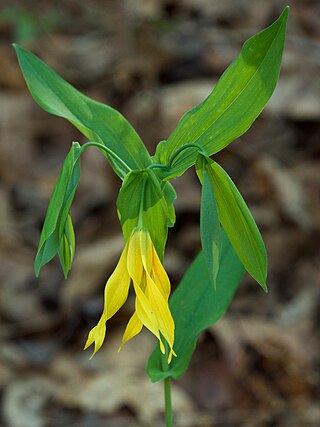
Uvularia grandiflora, the large-flowered bellwort or merrybells, is a species of flowering plant in the family Colchicaceae, native to eastern and central North America.
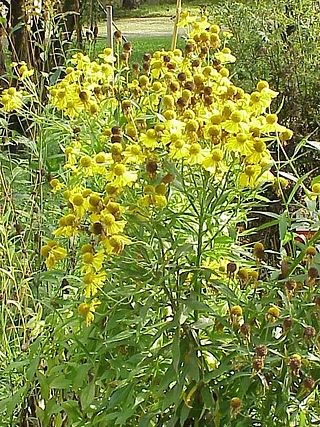
Helenium autumnale is a North American species of flowering plants in the family Asteraceae. Common names include common sneezeweed and large-flowered sneezeweed.

Digitalis grandiflora, the yellow foxglove, big-flowered foxglove, or large yellow foxglove, is a species of flowering plant in the genus Digitalis, family Plantaginaceae. It is native to southern Europe and Asia. In mountains it grows on warm, bushy slopes or areas left after logging. The Latin specific epithet grandiflora means “large flowered”.

Coreopsis auriculata, the lobed tickseed or mouse-ear tickseed, is a North American plant species of the family Asteraceae. It is native to the southeastern and east-central United States, from Louisiana east to the Florida Panhandle and as far north as Kentucky, Maryland, and West Virginia.

Coreopsis tripteris is a North American species of flowering plant in the family Asteraceae. It is widespread across much of eastern and central North America from the Florida Panhandle west as far as eastern Texas and north to Québec and Ontario. Its common names include tall tickseed, tall coreopsis, and Atlantic coreopsis.

Coreopsis verticillata is a North American species of tickseed in the sunflower family. It is found primarily in the east-central United States, from Maryland south to Georgia, with isolated populations as far west as Oklahoma and as far north as Québec and Ontario. The common names are whorled tickseed, whorled coreopsis, thread-leaved tickseed, thread leaf coreopsis, and pot-of-gold.

Coreopsis palmata is a North American species of flowering plant in the family Asteraceae native to North America. Common names include stiff tickseed, wedgeleaf coreopsis, prairie coreopsis, prairie tickseed, and finger coreopsis.

Coreopsis gladiata, the coastalplain tickseed, is a North American species of perennial tickseeds in the family Asteraceae. It is native to the southeastern United States from eastern Texas to southeastern Virginia, primarily to the coastal plain.

Coreopsis bigelovii is a species of flowering plant in the daisy or sunflower family, Asteraceae, with the common names Bigelow coreopsis and Bigelow's tickseed. It is endemic to California.
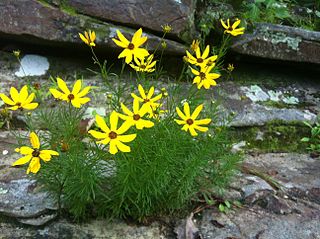
Coreopsis pulchra is a North American wildflower of the Southeastern United States, in the family Asteraceae. Its common names are woodland tickseed, showy tickseed, and beautiful tickseed.
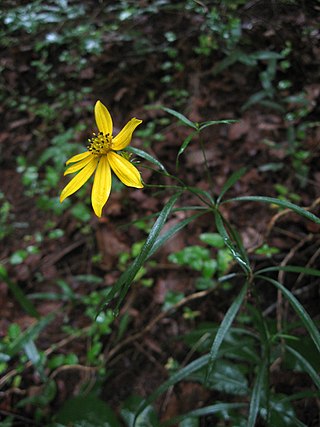
Coreopsis delphiniifolia, the larkspurleaf tickseed, is a North American species of perennial tickseeds in the family Asteraceae. It is native to the Southeastern United States, primarily Georgia and the Carolinas with a few outlying populations in Tennessee and Virginia. It is listed as an endangered species in Tennessee.
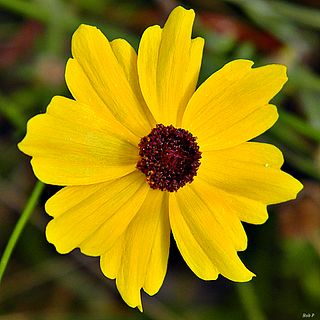
Coreopsis leavenworthii, or Leavenworth's tickseed, is an annual or short lived perennial plant species in the family Asteraceae. It is often grouped within Coreopsis tinctoria which it resembles.

Brickellia grandiflora, known by the common name tasselflower brickellbush, is a species of flowering plant in the family Asteraceae.
Coreopsis intermedia, the goldenwave tickseed, is a North American species of plants in the family Asteraceae. It is native to a small region in the south-central United States (eastern Texas, western Louisiana, southwestern Arkansas.
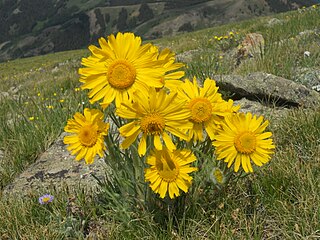
Hymenoxys grandiflora is a North American species of flowering plant in the daisy family known by the common names graylocks four-nerve daisy, graylocks rubberweed, or old man of the mountain. It is native to high elevations in the Rocky Mountains of the western United States.





















